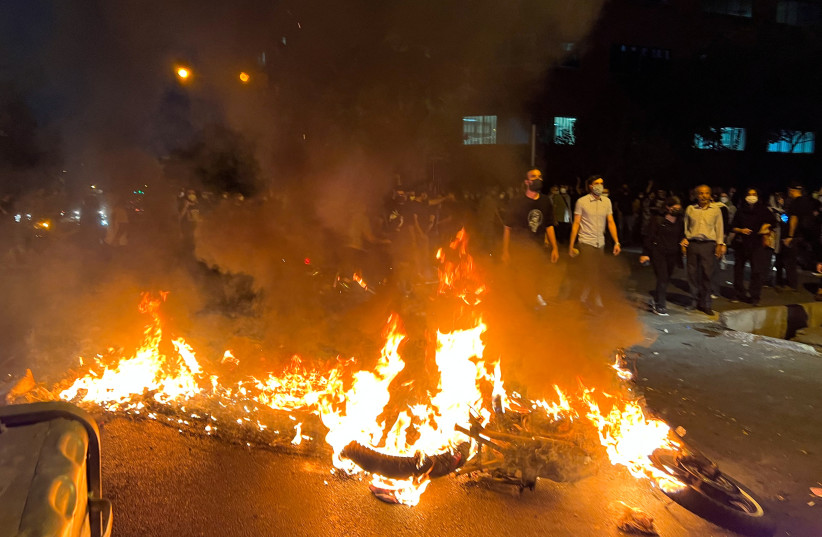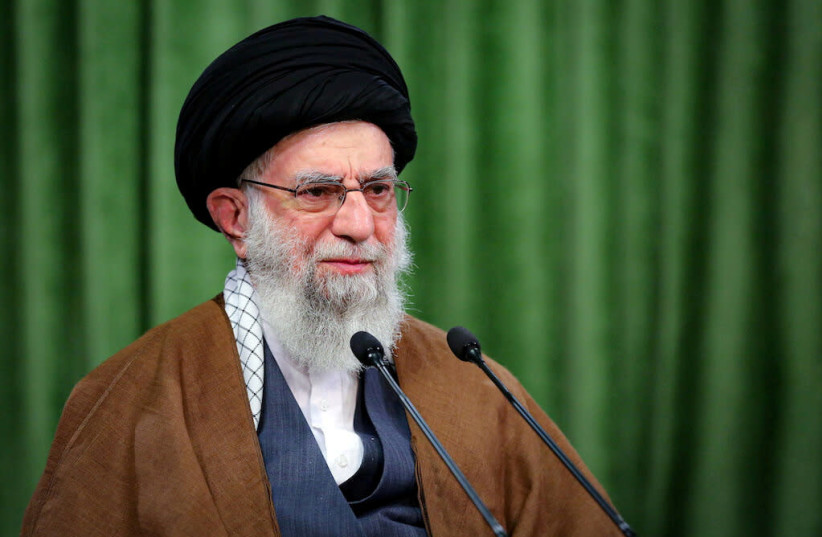It would be great if the protests in Iran, prompted by the regime’s killing of Mahsa Amini by the morality police for not covering her hair to their standards, toppled the ayatollahs and led to a better world.
Yet, despite heavy media coverage and excitement by Iran critics, there is almost zero chance of that happening – at least at this stage.
What does this revolution lack in order to be successful?
Successful revolutions, in Iran and elsewhere, have crucial elements to them that this wave of protests is missing.
First, there is no protest leader, and most potential leaders were under house arrest long before this latest wave started.
The regime learned from the 2009 protests that it cannot grow into a revolution without coherent leadership and coordination.

Former Mossad chief Tamir Pardo told The Jerusalem Post that 2009 might have been a golden opportunity to remove the threat of the Islamic Republic’s fanatical leaders, but that the US was too haunted by its coup of Iranian leader Mohammad Mosaddegh in 1953.
In that coup, the CIA and Britain’s MI6 helped remove Mosaddegh. Eventually, anger at that coup and at the US’s installed ruler, Mohammad Reza Pahlavi, contributed to the Islamic Revolution and the ayatollah’s unqualified hatred of America for the last 43 years.
This held the US and others back from intervening to help the protesters 13 years ago.
The protesters lack one more thing: a clear cohesive message to unite disparate ethnic and class groups. There is the women’s rights angle, but many of those protesters’ beliefs are limited to reformers who are a minority compared to the ruling regime, or even the pragmatists, some of whom criticize the regime, but are generally against ideas favored by feminists and the West.
Even if the reformers were crafty enough to form an alliance with the pragmatists, none of these groups have key allies who can use force on their behalf.
They do not have support in the military, and the Islamic Revolutionary Guard Corps is deeply intertwined with the fate of Iran's Supreme Leader Ayatollah Ali Khamenei and his allies.
A revolution does not need to control all the institutions that wield force, but usually, it needs at least one highly sympathetic arm on its side.
The regime is well prepared for the demonstrations
Not only that, but the ayatollahs learned from the fall of the USSR and some other dictatorships when the professional military refused to fire on its own citizens, that another group was needed to maintain domestic order – the Basij.
There are no accurate estimates for the Basij’s manpower, but some put its numbers at one million or even millions.
Their ranks are usually filled by fanatics, hooligans or a mix of the two who have no compunction about beating or slaughtering their own people for protesting.
But we are in 2022, a time when revolutions have happened through the Internet and social media.
Iran has learned from these soft Internet revolutions in Ukraine and Georgia. With technological support from China and Russia, it has developed tools for shutting down the country’s internet and all cellphone service.
If the Internet was once a space where democracy could spread too quickly for incompetent old-school authoritarians to compete, in 2022, authoritarians have control when they need to – even using the Internet to identify protest leaders.
No insurrection has yet found a new playing field or tactic to outflank Iran, China, Russia or other authoritarian regimes since these regimes jumped ahead of democrats in their use of technology to oppress dissent.
The past does not necessarily predict the future
Next, many analysts make the mistake of looking at the protests of 1979 and earlier Iranian protest waves as a guideline for understanding the present – a point of view that would mistakenly lead to the conclusion that very long protests make revolution more likely.
Yet, after the 2009 protests, Khamenei has consistently used a playbook of temporarily showing a soft side and willingness to dialogue with protesters if they end their activities within a short period. That is followed by an unregulated brutal crackdown if the protests make it past that unspecified period of time.

Also, the longer the protests go on, the more confident the regime seems to be that it will not fall, and the more it appears ready to act in the most brutal manner possible to end them, while discounting them as being led by foreign traitors.
It seems that post-2022, protests will only succeed in toppling the Iranian regime if they explode rapidly and shake the regime to its foundations before it has time to catch its breath.
This is partly because the regime does not care how much its wider public suffers, and because the wider public has become used to unusual levels of suffering after spending most of the last decade under heavy global or Western sanctions.
All of that said, the future is not hopeless.
Khamenei has had several encounters with poor health over the last decade. When he dies, neither his son, Mojtaba, nor Iranian President Ebrahim Raisi, will likely command the same loyalty of the IRGC and the clerics’ class.
A fracturing of unity in those groups could finally give those seeking to rebel the power they need to win or weaken the regime’s ability to crack down enough and allow protesters to overwhelm it.
Alternatively, the cumulative damage by periodic protests every few years could harm the economy enough or slowly turn enough key economic players against the regime to transform holes in the regime’s support into a chasm.
But like the stunning and sudden fall of the USSR in 1991, no one knows whether we are on the verge of such a game-changing moment or if the regime’s tools of oppression may be strong enough to let it hold on for some decades more before the internal rot of authoritarianism and corruption catches up with it.
